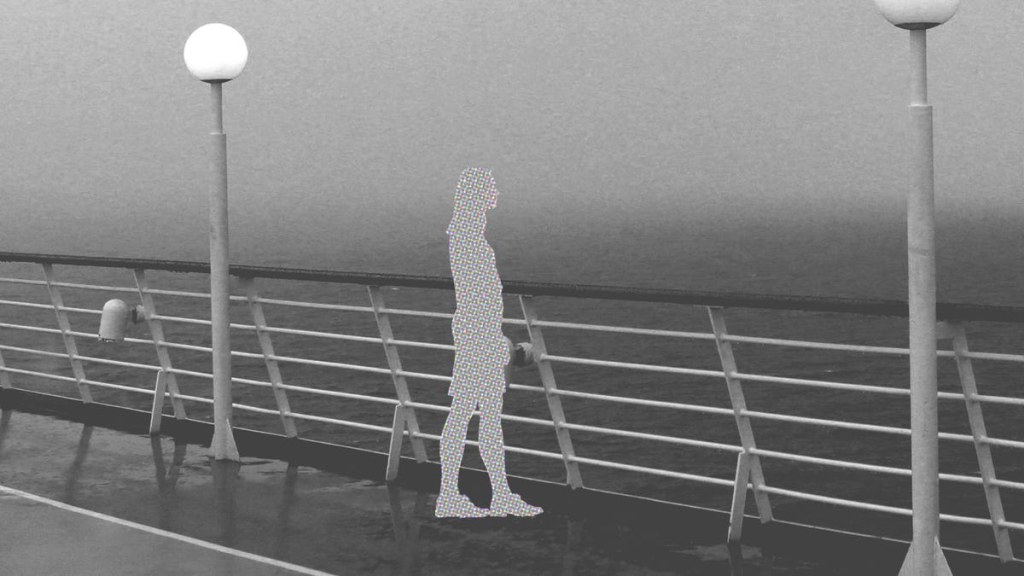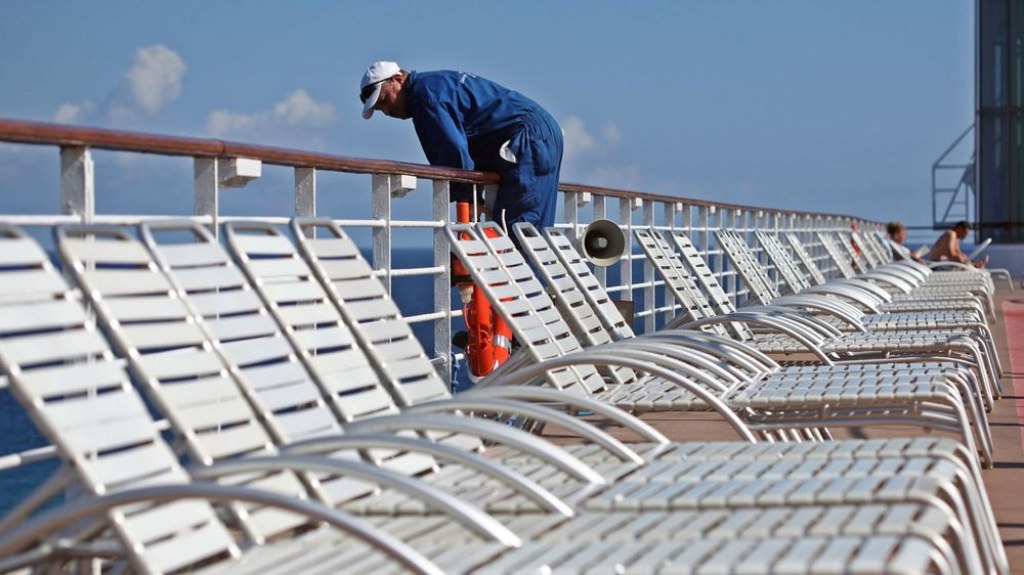Cruise Ship Railing Height: Ensuring Safety and Enjoyment
Greetings, cruise ship enthusiasts! Are you eagerly awaiting your next adventure at sea? As you prepare for your voyage, it’s important to familiarize yourself with various safety measures on board. One crucial aspect to consider is the cruise ship railing height. In this article, we will delve into the details of cruise ship railing height, its significance, and how it contributes to a safe and enjoyable cruising experience. So, let’s set sail and explore the world of cruise ship railing height!
Introduction
When embarking on a cruise, passengers often find themselves drawn to the mesmerizing ocean views and the captivating activities on board. With so much excitement, it’s essential to prioritize safety. Cruise ship railing height plays a vital role in ensuring the well-being of passengers, minimizing accidents, and providing an enhanced cruising experience.
Throughout this article, we will answer important questions about cruise ship railing height, including what it is, who sets the standards, when it was established, where it applies, why it matters, and how it is regulated. By understanding these key aspects, you can make informed decisions and enjoy your cruise with peace of mind.
What is Cruise Ship Railing Height? 🛳️
Cruise ship railing height refers to the minimum height required for the protective barriers or railings on a cruise ship. These railings are installed along the ship’s decks, balconies, and other areas to prevent passengers from accidentally falling overboard. Adequate railing height is crucial to ensure passenger safety and reduce the risk of accidents at sea.
Why is Cruise Ship Railing Height Important? ❗

Image Source: kinja-img.com
The primary purpose of cruise ship railing height is to provide a barrier that prevents passengers from falling overboard. Without proper railing height, the risk of accidents and potential loss of life increases significantly. By adhering to specific height standards, cruise lines aim to create a safe environment for passengers to enjoy their cruise experience without compromising their safety.
Who Sets the Standards for Cruise Ship Railing Height? 📏
The standards for cruise ship railing height are established by international maritime organizations, such as the International Maritime Organization (IMO), and are incorporated into the Safety of Life at Sea (SOLAS) regulations. These organizations work closely with cruise ship manufacturers and operators to develop guidelines that ensure the highest level of safety for passengers and crew members.
When Were the Regulations for Cruise Ship Railing Height Established? ⌛
The regulations regarding cruise ship railing height have evolved over time to address changing safety requirements. The SOLAS regulations, which cover various aspects of ship safety, including railing height, were first introduced in 1914 after the sinking of the RMS Titanic. Since then, these regulations have been periodically updated to incorporate advancements in technology and industry best practices.
Where Do the Regulations for Cruise Ship Railing Height Apply? 🌍
The regulations for cruise ship railing height apply to all ocean-going vessels, including cruise ships, regardless of their size or capacity. These regulations are enforced globally to ensure consistency and uniformity in safety standards across the maritime industry. Whether you’re cruising in the Caribbean, Mediterranean, or any other region, the cruise ship you’re on must comply with the prescribed railing height requirements.
How is Cruise Ship Railing Height Regulated? 📜

Image Source: i0.wp.com
The enforcement of cruise ship railing height regulations lies with the flag state of the ship, which is the country where the ship is registered. The flag state is responsible for conducting inspections and audits to verify compliance with the prescribed standards. Additionally, classification societies, independent organizations that assess the safety and quality of ships, also play a role in ensuring cruise ships meet the required railing height criteria.
Advantages and Disadvantages of Cruise Ship Railing Height
As with any safety measure, cruise ship railing height has its advantages and disadvantages. Let’s explore both sides of the coin to gain a comprehensive understanding of its impact on the cruise experience.
Advantages of Cruise Ship Railing Height ✅
1. Enhanced Passenger Safety: The primary advantage of cruise ship railing height is the increased safety it offers to passengers. By providing a barrier that meets specified height requirements, cruise lines help prevent accidents and protect passengers from falling overboard.
2. Unobstructed Views: Despite the barriers, cruise ship railing height is designed in a way that allows passengers to enjoy unobstructed views of the surrounding landscapes and the vast ocean. This ensures that passengers can fully immerse themselves in the beauty of their surroundings.
3. Peace of Mind: Knowing that there are adequate safety measures in place, such as proper railing height, allows passengers to relax and enjoy their cruise without constant worry about accidental falls or other potential dangers.
Disadvantages of Cruise Ship Railing Height ❌
1. Restricted Access: In some cases, the height of cruise ship railings may restrict passengers from leaning over or accessing certain areas of the ship. While this limitation is in place for safety reasons, it may affect passengers’ ability to interact closely with the ocean or take certain photographs.
2. Reduced Flexibility for Ship Design: Adhering to specific railing height requirements can impose limitations on the design and aesthetics of a cruise ship. Designers must ensure that safety is not compromised while still creating an appealing and visually pleasing environment for passengers.
3. Potential Obstruction of Views: Although cruise ship railing height is designed to maximize visibility, there may be instances where the railings obstruct certain angles or viewpoints. However, cruise lines strive to strike a balance between safety and providing passengers with breathtaking views.
Frequently Asked Questions (FAQs)
1. Does cruise ship railing height vary based on the ship’s size?
No, cruise ship railing height regulations apply uniformly to all ocean-going vessels, regardless of their size. The standards ensure consistent safety measures across the maritime industry.
2. Can passengers request modifications to the cruise ship railing height?
No, passengers cannot request modifications to the cruise ship railing height as it is governed by international regulations and enforced by the flag state and classification societies. These measures are in place to maintain the highest level of safety for all passengers.
3. Are there any exceptions to the cruise ship railing height regulations?
Exceptions to cruise ship railing height regulations are rare and typically involve special cases that are thoroughly evaluated and approved by the flag state and classification societies. These exceptions must provide an equivalent or higher level of safety than the standard regulations.
4. How often are cruise ship railings inspected for compliance?
Cruise ship railings are subject to regular inspections conducted by the flag state and classification societies. These inspections occur during routine ship surveys and audits to ensure compliance with the prescribed railing height standards.
5. Can passengers rely solely on cruise ship railing height for their safety?
No, while cruise ship railing height is essential, passengers should also exercise caution and follow the ship’s safety guidelines. It is important to be aware of one’s surroundings, avoid risky behavior near railings, and adhere to any additional safety measures provided by the cruise line.
Conclusion: Sail with Confidence! ⚓
Now that you have gained a comprehensive understanding of cruise ship railing height, you can embark on your next voyage with confidence. Remember, cruise ship railing height is not just a regulatory requirement; it is a crucial element in ensuring your safety and enhancing your overall cruising experience. By appreciating the advantages, understanding the regulations, and acknowledging the limitations, you can fully enjoy the magic of cruising while staying safe at sea. So, embrace the open waters, indulge in thrilling adventures, and create unforgettable memories on your next cruise!
Final Remarks: Safety First, Adventure Always! 🌊
Disclaimer: The information provided in this article is for educational purposes only. The regulations and standards regarding cruise ship railing height may be subject to change. Always refer to the official guidelines provided by the relevant maritime organizations and consult with the cruise line directly for the most up-to-date information.